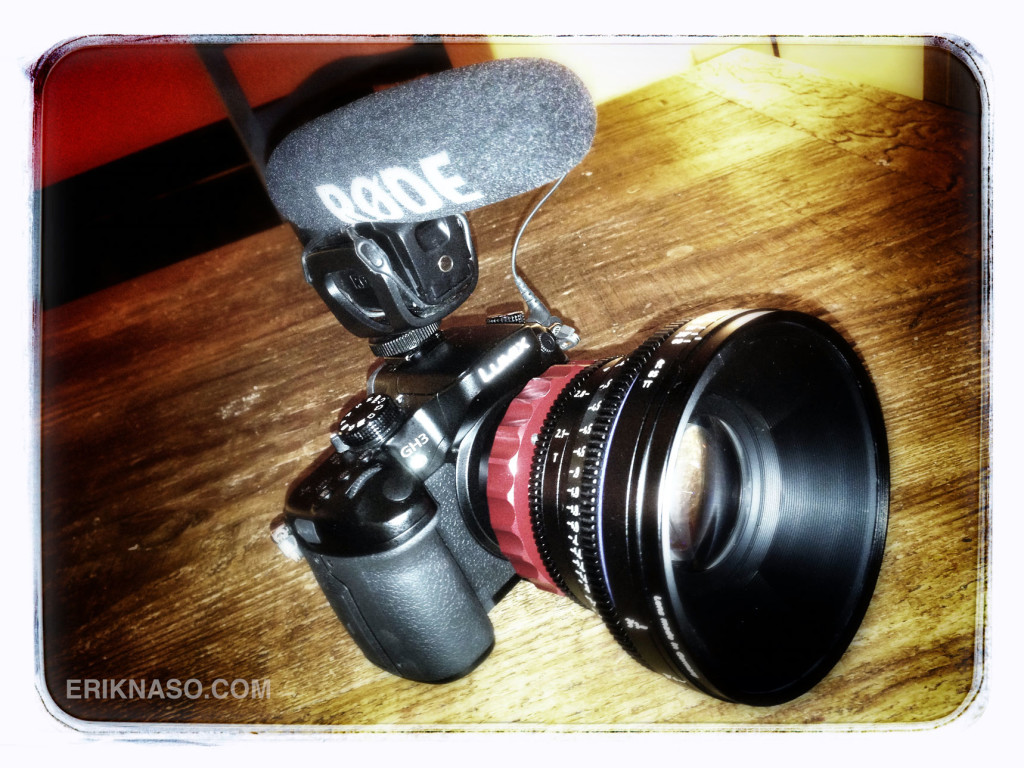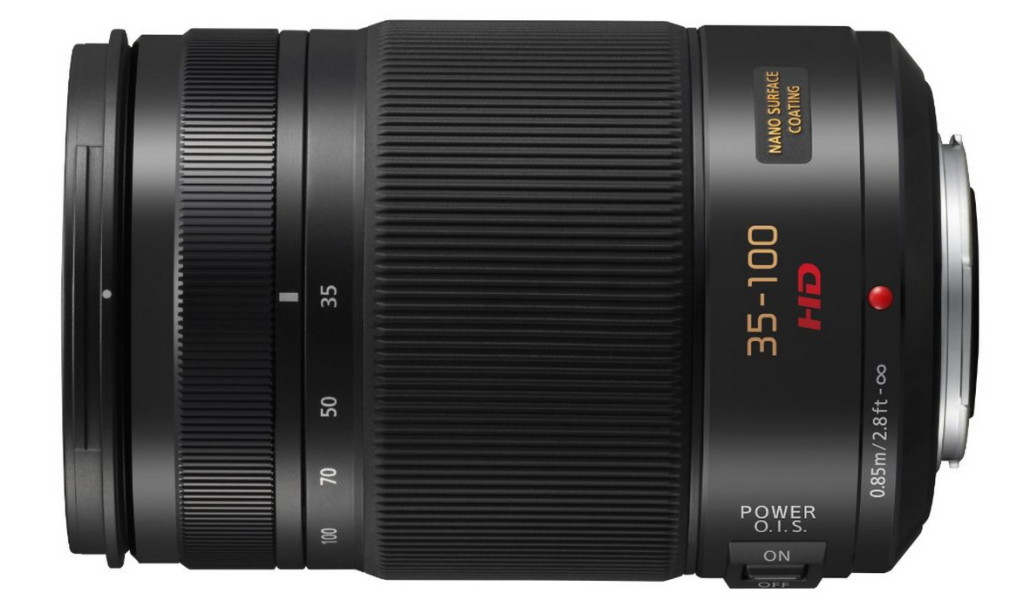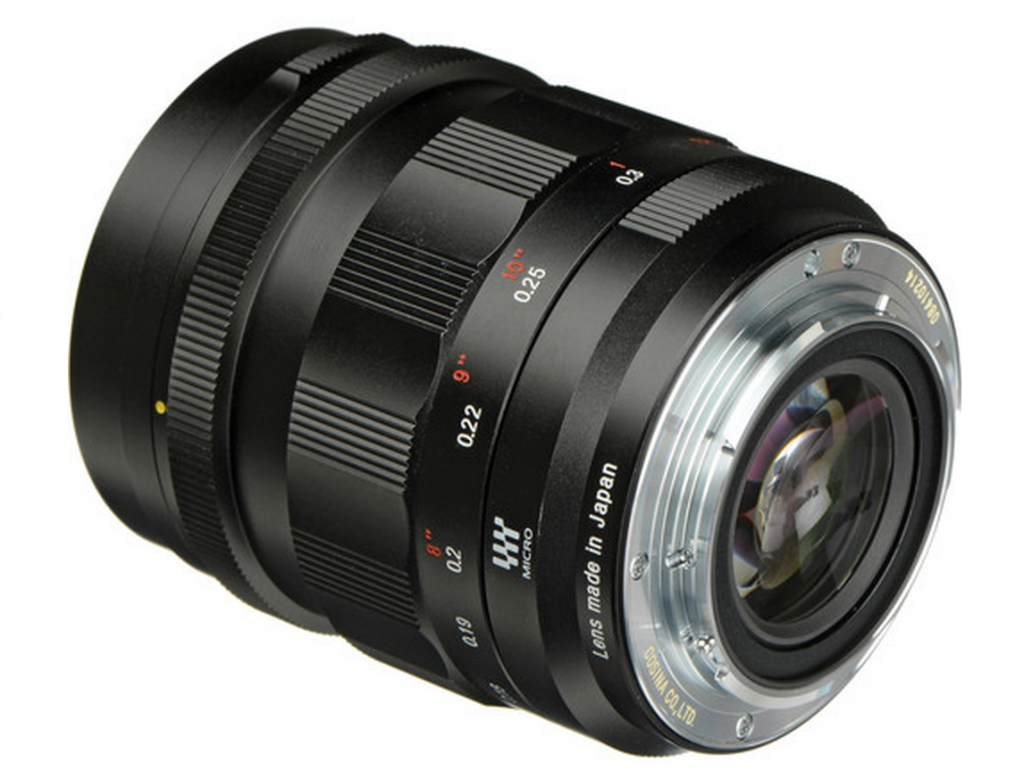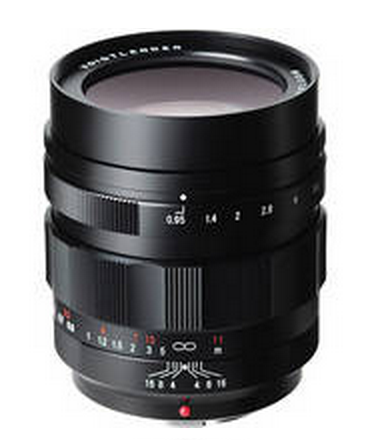Which Lenses Should I Buy For My GH4 or GH3?
The GH4 is shipping now and the next big purchase if you don’t already have them is lenses. This list could get really long because the GH4 can take so many different lenses due to its Micro Four Thirds Mount (MFT). Add an adaptor and you can practically use any lens on the market. This list list of course works for the GH3 and GH2 as well. Most folks reading this article are probably new to the MFT world since that 4K shooting GH4 sucked you in! I did a post another post like this for the V100 and C300. That list is also good to check out. Remember unless you have an electronic adapter Canon EOS EF lenses you won’t be able to adjust the aperture. If you already have a nice set of EF lenses then maybe the Redrock Micro LiveLens EF to MFT adapter might be worth looking into. The adapter requires an external 9V power source.
What you need to know about MFT field of view.
The Micro Four Thirds sensor is approximately half the size of a full frame sensor used in the Canon 5D MKIII. Why is this important? When you’re using 35mm stills lenses with an adapter on the GH4 the image is cropped in the center. This is important to know for lens selection. The image isn’t magnified only cropped. If you are used to using 85mm for interviews you will have to move back to frame the same shot on the GH4. Remember it’s cropped. Not magnified. This can make lens choices a little more difficult. If you have limited space to work in. The Backgrounds will be less compressed as well. You will see more of it because you pulled the camera back. One benefit of 35mm stills lenses is you’re using the prime part of the lens. The center. Lenses tend to get worse optically in the corners so not seeing them because they are cropped out is a nice benefit.
With native MFT lenses you don’t have the crop because the lenses are designed for MFT and covers the sensor using all the optics not just the center. Since native MFT lenses are designed to fit the sensor. They are smaller and lighter making your camera a nice size and weight. When shopping for native MFT lenses just remember that a 25mm is a normal MFT lens. A 50mm is for full frame. Basically half the size.
I decided to break this list up a bit. First I’ll go native. Native MFT lenses have a few advantages like image stabilization for handheld work. They’re also very compact and light making the camera easier to work with. If you keep your camera light your support gear can also be much lighter. Jibs won’t need as much counter weight. Tripods can be smaller, fluid heads can be lighter too, and your back and arms will thank you.
As for 35mm full frame lenses I have a post I made for the C100 and C300 “Which Lenses Should I Buy For My C100 and C300?” Check them out too because I think these will also work very well with your new GH4 and the right adapter. List post is going to grow just like the one I did for the Cinema EOS cameras. If I find a great lens I will add it. If you find a great lens and want the world to know about it please add it to the comments section below and I will check it out.
I’ve added links to each lens. Please help support my site my using them if you decide to pick any of these up. If you prefer Click on B&H if you prefer. Thanks! Okay here we go!
Native Micro Four Thirds
The following three Lumix lenses are my favorite for the GH4. They cover a nice range and have very good image quality.
Panasonic Lumix G Vario 7-14mm F4 ASPH
This crazy wide lens is so fun to use. I got a lot of use from it on the AF-100 too. At 7mm it compares to a 14mm on a full frame camera. It’s not a fast lens at f4 but if you’re looking for shallow depth of field you won’t get it anyways since this is a very wide angle lens. Cameras are so good now when using higher ISO the speed shouldn’t be an issue.
Price $968.
LUMIX G X VARIO 12-35mm / F2.8 ASPH
You can shoot all day with just this one lens. 35mm equivalent is 24-70. This range is very popular and the Lumix version is fantastic. Good build and Image stabilization works very well for handheld work or in stabilizers. One bummer is the electronic focus. It’s never not in a non electronic mode so no repeatable focus is possible. This could be an issue when using a follow focus with hard stops. They brand it as HD but to be honest it’s more of a stills lens than a hybrid. I still love it but you have to know it’s limitations too.
Price $998.
Panasonic 35-100mm f/2.8 Lumix G Vario Zoom Lens
The third favorite is the Panasonic 35-100mm f/2.8 Lumix G Vario Zoom Lens. Okay maybe this is my favorite. Very sharp. Fast and has great IS. It’s super sharp. Nice range for beautiful bokeh if you’re shooting headshots and interviews. Here is where the MFT format really shines. This lens is really light compared to a Canon 70-200 IS comes in at 52.6 oz./1490g. The Lumix is only 10.8 oz. Same equivalent focal length and a whole lot lighter.
Price $1498.
Panasonic LUMIX G LEICA DG NOCTICORON 42.5mm / F1.2 Lens
I checked out this new beauty at NAB. It’s really nice and has an excellent build. Reviews are also strong. Some say it’s more Leica than Panasonic. I like that. No offense Panasonic! With the addition of image stabilization and a super fast f1.2 it may very well be the best MFT lens available for portrait or interviews. The 42.5mm has a nine blade iris for nice bokeh. I want one!
Here is the tough part. Price $1600.
Lumix pancake lenses are also good choices if you want a light very small compact prime. They are crazy short and pack a bright sharp image. How they get these lenses so small is an engineering marvel.
Panasonic Lumix G 14mm f/2.5 ASPH Lens
The 14mm f 2.5 is a fast and small little sucker! This is the one on my new GH4 at the top of the post.
Price $322.
Lumix G 20mm / F1.7 II ASPH
The 20mm is super fast at f1.7. Again very sharp and great for keeping the camera super compact.
Price $428
Voigtlander Nokton make some really nice all manual lenses for MFT cameras. I owned the 35mm f0.95 when I had an AF-100 had really loved it. I should have never sold that lens. Now Voigtlander makes a few more models and they all are very good. These are a fully manual lenses. The focus rotation is longer and fluid similar to the feel of Zeiss lenses.
Voigtlander Nokton 25mm f/0.95 Type II Lens for Micro Four Thirds
The 25mm f0.95 is a special lens. Wide open it has a beautiful look even with the vignetting it’s just magical. As you close it down it gets really sharp. The 10 blade iris creates some beautiful bokeh. This is the VII which permits switching between a steeples, de-clicked aperture. Very nice feature for video use. Voigtlander Nokton now have two more f0.95 lenses to round out the set to three. A 42.5 and 17.5. All have 10 blade diaphragm
Price $999
Voigtlander Nokton 42.5mm f/0.95 Micro Four Thirds Lens
Same build as the 25mm with de_clicked iris feature. 10 blade diaphragm.
Price $999.
Voigtlander Nokton 17.5mm f/0.95 Lens for Micro 4/3 Cameras
Again same great build but the 17.5 doesn’t have the de-clicked iris feature.
Price $1450.
SLR Magic Noktor 50mm f/0.95 HyperPrime
SLR magic are interesting lenses and I haven’t tried them yet but they do look intresting. Super fast like the Voigtlanders but priced a tad lower. They also have a cine line.
Price $1099.
Rokinon Cine Lenses in Canon mount
The best value for the cinema guy! Ever since Rokinon/Samyang introduced these cine versions they have been selling like hotcakes. The 85mm and 35mm are my favorite. These inexpensive lenses are being used on all sorts of digital cinema cameras including The Red Epic. Build is okay. Some have issues over time but again the price is so good you have expect a little give and take. I would recommend getting a set like the 24mm T1.5, 35mm T1.5 and 85mm T1.5. If you need a little more on the wide side a 14mm T3.1 is also available.
Since we are now talking about manual lenses I have to include Nikon. They have lots of manual iris lenses that work beautifully with an adapter. You can also use Nikon G Series lenses with a adapter that allows you to change the iris with the adapter. Like this one from Novoflex. The Nikon G have a small pin on the mount and the adapter grabs it. Rotate the blue collar and the iris changes. The rotation is very short so it takes a little getting used to and you wont know what f-stop you are at. Still a nice feature and if you have a collection of Nikon already this Novoflex will sure come in handy. One thing that drives me crazy with Nikon is they focus the other way. I never could get used to it so I tend to stick with Canon mount lenses.
This is a good start and I will be adding more to the list over time. Bookmark it and comeback to see what else has been added. The GH4 is a very feature rich camera that also has a very versatile mount. Experiment with vintage lenses too. You can achieve some interesting and unique images. Hey not every lens has to be razor sharp! Enjoy that new camera!
Follow me on Twitter @eriknaso and check out my page on Facebook.
Thanks for coming by! Please help support my site by using the links on this page or bookmark these from my favorite retailers, B&H, Adorama, Zacuto, Amazon.com & Think Tank Photo. Using the links cost you nothing extra, but it helps offset the cost of running my blog. Thanks again for coming by eriknaso.com!
Filed in: GH2 • GH3 • GH4 • Lens Talk • Lenses • Micro Four Third Lenses • Micro Four Thirds
























Great List.
+ Something like a Speed Booster or “Lens Turbo” is great for MFT cameras to use EF glass. The Rokinon becomes a F0.95(T1.1) Cine lens.
Actually the m4/3 system is significantly smaller than “half the size” of full frame. 225mm vs 864mm (squared).
Hello Erik,
Thanks for all informations you share!
Have you ever tested the Zeiss CP.2 with the GH3/4?
I will probably rent the 15mm T2.9 (MFT mount) for my GH4 but I don’t find samples and user experience.
I used to have a 85mm CP.2. Nice lens. It works great.
Erik– something I’ve been thinking on. I’m shooting on an AF100, which I came to from a GH2 (besides the attached lens 1/3″ sensor variety of cameras). For non-MFT lenses, I had been sticking to Nikon mount. But it has become obvious to me that I will eventually upgrade to something Canon. I’ll probably end up trading this in for a used C100 once the used market becomes more saturated with them.
So, with that said, do you think it’s a good idea to start buying EF mount lenses instead of Nikon mount? It seems like I remember that there was an extra difficulty with adapters if it was an electronic aperture lens. Has that been worked around? Thanks!!
I would wait on buying those EF lenses. Metabones has a EF to MFT electronic adapter in the works but not available yet with no delivery promise so I would be hard pressed to recommend spending a lot on lenses you can’t use. I have the Metabones EF to E Mount (NEX) for the Sony A7s and it works great but autofocus isn’t for stills. To be able to use my set of Canon lenses on the A7s without a battery or other bulky accessories is wonderful.
Personally I’d *always* recommend going with Nikon F mount lenses whenever you can. (and only have a minority of lenses in the native mount. Depending on your particular needs)
As while we’re finally about time going to be seeing soon EF to MFT electronic focal reducers (not that I care, I don’t have an Canon EF lenses 😀 ), you need to look a bit further into the future than right now.
Nikon F/G adapters have always been out a lot longer, both the focal reducers and the normal type. Also you have a much much wider range of manufacturers and choices, for instance I really like the RJ Lens Turbo which is much cheaper:
http://www.personal-view.com/talks/discussion/9086/rj-lens-turbo-m43-adapters/p1
You’ll never get as much choice, or as quickly, with Canon EF as you do with Nikon F.
So looking to the future, you have m4/3 cameras now, but what is going to be next…. and next after that… who knows!
Maybe 3 or 5 years something completely out of the blue happens like FujiFilm makes a mirrorless camera with amazing capabilities. Or Nikon (or Pentax, with their odd Pentax Q cameras) drops their Nikon 1 system cameras and launches a phenomenal DX mirrorless camera?
You’ll be able to much more quickly jump onto one of those if you have a Nikon F mount collection of lenses, than if you are stuck with Cannon EF lenses. As who knows how long until you’d see the Canon EF adapters, while the Nikon F mount ones would start coming out almost immediately in response.
I doubt of course Fujifilm/Pentax/Nikon/etc will do any of those scenarios which I just suggested, but who knows… and that is the point, is hard to predict the future! Yet 5yrs from now, your lenses would still be great lenses to keep on using, would be a shame if you couldn’t due to change in cameras.
When I had the Af-100 I used Nikon mount lenses. It made sense but then I also bought the GH2 and GH3 and wanted native lenses with IS and fast auto focus. Thats why I invested in Lumix and native MFT mount lenses. To get the most from the cameras functions.
Yup, is about striking a balance between the two I reckon. So for me that means the bulk of them Nikon F mount, with just a few m4/3 native mount ones.
Though I reckon as monitors and focus peaking functions get better and better, I’ll see less of a need for native mount lenses, and will see more use out of my Nikon F mount lenses in return.
The Voigtlander 17.5 actually does have the de-clicked aperture ring and I love it! Beautiful lens.
Hi, I just get the Lumix G 20mm / F1.7 II ASPH and I don’t like the fact that the autofocus seems to be quite noisy. I think that’s a bad thing for video recording, the mic records that noise all the time.
AFAIK this lens doesn’t have a silent autofocus.
What would you recommend me in that range with a silent autofocus?
Thanks in advance.
If the microphone is located off camera then it shouldn’t be so bad? Plus switch over to manual focus once you’ve started recording anyway.
Hi Erik – I thought I would mention that Panasonic FINALLY provided a firmware update for the H-HS35100 35-100mm lens. This update improves the O.I.S. system in this lens, and substantially reduces the micro jitter shakes when shooting hand held. I don’t know why Panasonic took so long to deal with this, but I am glad they finally did!
Thanks Erik – Good list. I’ve used the Olympus M.Zuiko lens also which seem to work really well with the GH4.